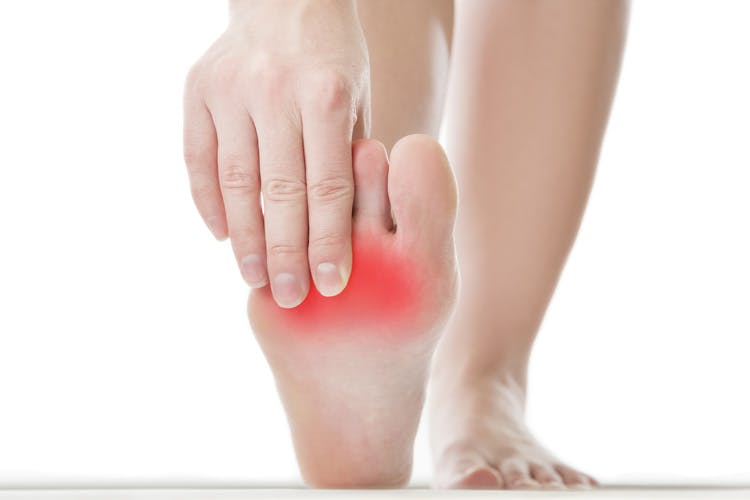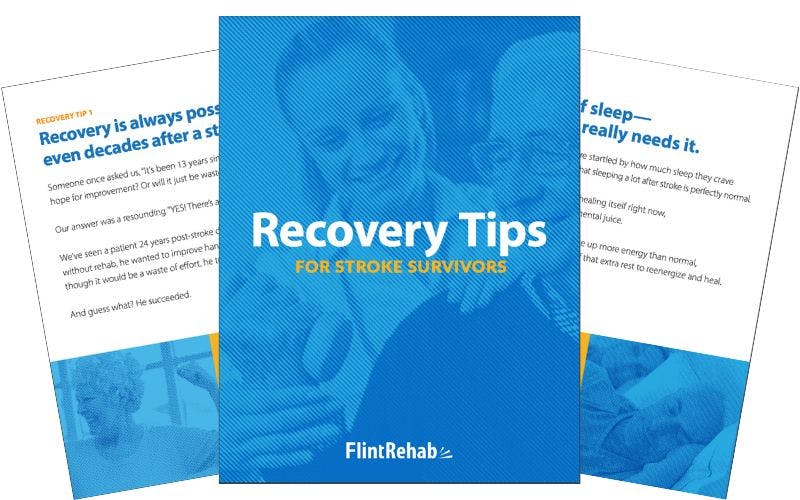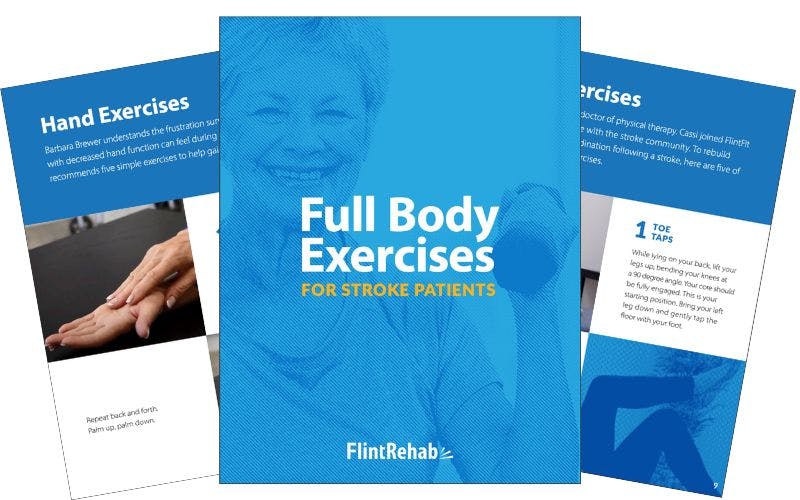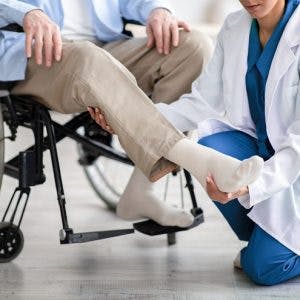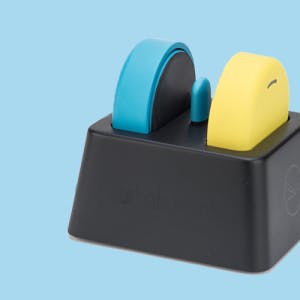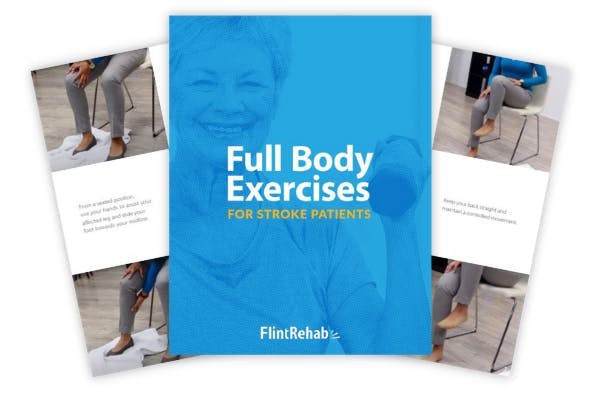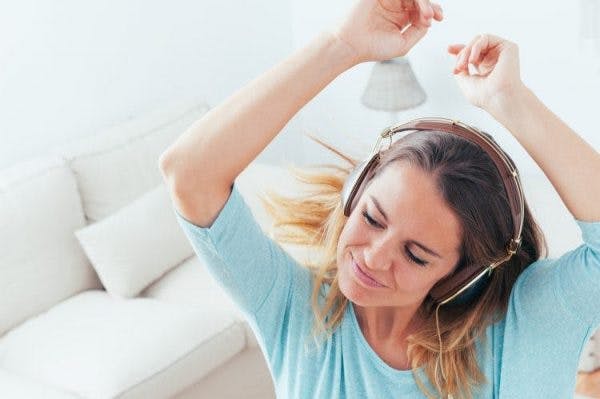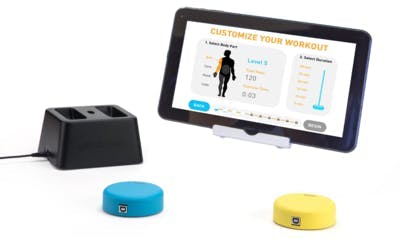After a neurological injury, such as a stroke, individuals may experience curled toes. Since there are multiple causes and types of curled toes, treatments vary from person to person. Often, individuals can discover how to fix curled toes by using a combination of rehabilitation exercises, therapeutic techniques, and orthotics.
This article will explore the types and causes of curled toes, as well as review methods centered on how to fix curled toes. Use the links below to jump directly to any section.
Types of Curled Toes
Curled toes refers to a condition characterized by the toes curling under the foot. Similar to the fingers, each toe has three joints, with the exception of the big toe which has only two. Typically, these joints allow the toes to straighten and bend as needed, facilitating both balance and walking. However, in the case of curled toes, individuals lose the ability to fully extend their toe(s). This can result in discomfort, pain, and potentially even balance and gait challenges.
There are many types of curled toes, differentiated by which toes and joints are most affected. Types of curled toes include:
- Hammertoe — when the toe bends at the middle joint, forcing the joint upward and the end of the toe downward. This results in the toe resembling a hammer.
- Mallet toe — when the toes bend down at the joint closest to the tip of the toe. The second toe is most often affected.
- Claw toe — when the 4 smallest toes bend up at the joint closest to the foot, and then each joint thereafter bends down. The toes appear to curl down, and in severe cases, may curl into themselves.
- Curly toe — when the toe curls downward and often to one side at birth. This often affects the 3rd, 4th, or pinky toes, and only causes problems in about 10% of cases.
Each of these types of curled toes can vary in severity. Generally, in mild cases of curled toes, the toe joints remain flexible. However, in more severe cases or when curled toes are not properly managed, the toe joints may become rigid or fixed in place.
What Causes Toes to Curl?
There are a number of causes of curled toes. The condition may be congenital (present at birth) or acquired later in life. Curled toes may be caused simply by wearing shoes that are too tight for too long. However, curled toes can also be the result of a neurological injury, such as a stroke.
When the neurological impact of a stroke impairs the brain’s ability to send motor signals to the toes, the muscles and tendons in the foot and toes may respond by tightening, resulting in curled toes. This involuntary tightening is referred to as spasticity.
If spasticity is not addressed, the toe joints may continue to curl and tighten. Eventually, the joints may become extremely tight and rigid, resulting in a contracture.
Especially in severe cases, curled toes can make standing, balancing, and walking uncomfortable or even painful. Fortunately, there are treatments that can help fix the condition.
Treatment: How to Fix Curled Toes
In order to fix curled toes, it often helps to discuss the condition with a doctor and/or therapist. This can help to identify the underlying cause(s), which is valuable for determining the appropriate treatment options.
Here are some of the best ways to fix curled toes:
1. Rehab Exercises
Therapeutic exercise for curled toes is typically the most effective, noninvasive treatment available. It is most beneficial when curled toes are the result of a neurological injury like a stroke.
Curled toe exercises (like those listed below) help retrain the brain to properly send signals to the feet and toes. This is because repetitive exercises activate neuroplasticity, the brain’s natural ability to rewire itself. The more one practices using the toe and foot muscles, the better the brain gets at controlling and relaxing those muscles, promoting recovery.
Want 25 pages of stroke recovery exercises in a PDF? Click here to download our free Stroke Rehab Exercise ebook now (link opens a pop up for uninterrupted reading)
2. Botox
Botox is an evidence-based treatment for fixing curled toes after stroke. It helps relieve spasticity by acting as a nerve block, resulting in relaxed muscles, and subsequently relaxed, straighter toes. While all individuals respond differently, one study showed that Botox treatments resulted in improvements of claw toe in nearly 70% of stroke survivors. Talking with a doctor or therapist can help to determine if Botox could be a good treatment option to pursue.
3. Electrical Stimulation
Electrical stimulation involves using electrodes on the skin to stimulate muscle contractions. This encourages the reconnection between the brain and the toe muscles.
Electrical stimulation works best when combined with other treatments, such as rehabilitation exercises and Botox. It also is most effective when curled toes are the result of a neurological injury like a stroke.
However, be sure to use caution and consult with a doctor or therapist before starting electrical stimulation if sensation of the foot or toes has also been affected.
4. Orthotics
Using orthotics may help fix curled toes by supporting proper alignment of the toes. These devices gently stretch tight joints and muscles into an optimal position.
Orthotics with toe crests may be recommended by a doctor or therapist. These may be custom-made or prefabricated, and may be slightly cushioned or more rigid depending on the individual’s needs. Orthotics should not cause pain, but rather will likely help with pain relief.
Orthotics are a compensation technique. This means that although they may help improve curled toes in the short-term, they do not address the root cause of the condition.
Further neglecting the foot muscles by using an orthotic and not actively moving the toes may worsen the condition over time. Therefore, it is essential to abide by the recommended wearing schedule for orthotics, and remove the orthotic throughout the day to practice toe exercises.
5. Therapeutic Taping
Therapeutic taping using kinesiotape or other types of athletic tape may also support the toes and promote proper alignment. Tape can be applied by a therapist, and should provide a slight stretch to the toes. In addition to aligning the toes, therapeutic taping may also relieve pain.
Therapeutic taping works by supporting the muscles, providing a physical reminder of their optimal position. It is not meant to keep the toes in a perfect position, but rather to prompt the individual to actively straighten the toes when they feel the tape’s pull. Again, therapeutic taping is a compensation technique, which can help to fix curled toes in the short-term, but does not address the underlying causes.
6. Insoles and Toe Separators
Some individuals find success treating their curled toes by using insoles or toe separators. Gel insoles or small toe cushions can be place in the shoes to promote pain relief. Toe separators, such as those that can be found in beauty salons, can also help relieve pain. These tend to be inexpensive, simple options to try that may help manage curled toes.
7. Roomy Shoes
If curled toes are caused by wearing shoes that are too tight for too long, then getting shoes with larger toe boxes can greatly help. This will give the toes necessary the “wiggle room” to be properly aligned. Also, be sure to avoid high heels as these greatly increase pressure on the toes and may worsen the condition.
8. Surgery
If most of these treatments have been trialed without success, surgery may be recommended to relax some of the muscle tendons in order to fix curled toes. Like most invasive surgeries, these procedures require lengthy recovery time and will require individuals to remain off the foot for an extended period of time. Therefore, conservative management is usually considered optimal, while surgery is used as a last resort.
While it is possible that curled toes can go away on their own in time — a phenomenon known as spontaneous recovery, its best to take an active role in recovery by trying various treatments for curled toes. Consider talking with a doctor or therapist for more guidance on how to fix curled toes as needed.
Exercises for Curled Toes
The best method of how to fix curled toes is by rewiring the brain through specific toe exercises. While the following exercises for curled toes can help, they may feel uncomfortable or awkward at first. Some of them require the toes to curl even more, which might seem counterintuitive. However, using the toe muscles is essential in order to regain control of them.
Stretching the toes consistently to keep the tendons lengthened is also important. Avoid this if it’s too painful. However, once the tendons shorten, it is hard to reverse.
In addition to gently stretching the toes daily, here are some simple curled toes exercises to practice:
- Toe Taps. With the feet flat on the ground, attempt to raise all the toes up from the ground and then place them back down. Even if the toes can’t move very much initially, attempting the movement will initiate adaptive changes in the brain.
- Floor Grips. Starting with the feet flat on the floor, attempt to grip the floor by curling the toes, and then relax the toes, allowing them to naturally begin to straighten.
- Finger Squeezes. Cross the affected foot over the opposite knee and place a finger in between the big and second toes. Then, squeeze these toes together to pinch the finger before relaxing the toes.
- Marble pickup. Place a dozen marbles on the floor and attempt to pick them up using the toes. If this is too difficult, attempt picking up large pom poms or cotton balls, or have a caregiver provide assistance.
- Towel curls. Place a towel on the floor and use the toes to pinch the towel and pick it up. Then, place it back down and flatten it out. This is a difficult exercise, but should get easier with practice.
- Toe Extensor Strengthening. Cross the affected foot over the opposite knee. Then, place a resistance band around the top of the foot to pull the toes back toward the body. Next, use the toe muscles to push the resistance band outward. There will likely be very minimal movement here, but with practice the muscles will grow stronger.
Repeat each of these exercises 10 times at least once or twice throughout the day. As the muscles grow stronger, increase the number of repetitions and frequency to continue making improvements.
Many of these exercises will be very difficult initially. However, even simply visualizing movements can stimulate adaptive changes in the brain. Therefore, visualize and/or attempt each movement multiple times each day in order to promote recovery.
If toe mobility is very limited, completing these exercises passively using a hand or a caregiver to stretch the toes is an excellent way to start on the road to recovery. Toe exercises may be slightly uncomfortable, but should never cause pain.
Consult with a doctor or therapist for more customized toe exercises as needed. Rewiring the brain through rehabilitative exercises takes time, so be patient and continue exercising consistently in order to fix curled toes.
Understanding How to Fix Curled Toes
Curled toes can occur following a neurological injury, such as a stroke. While there are a number of types and causes, the best way to fix curled toes is typically to practice toe exercises. Consistently using repetitive exercises can promote adaptive changes in the brain through neuroplasticity, allowing individuals to recover from curled toes.

